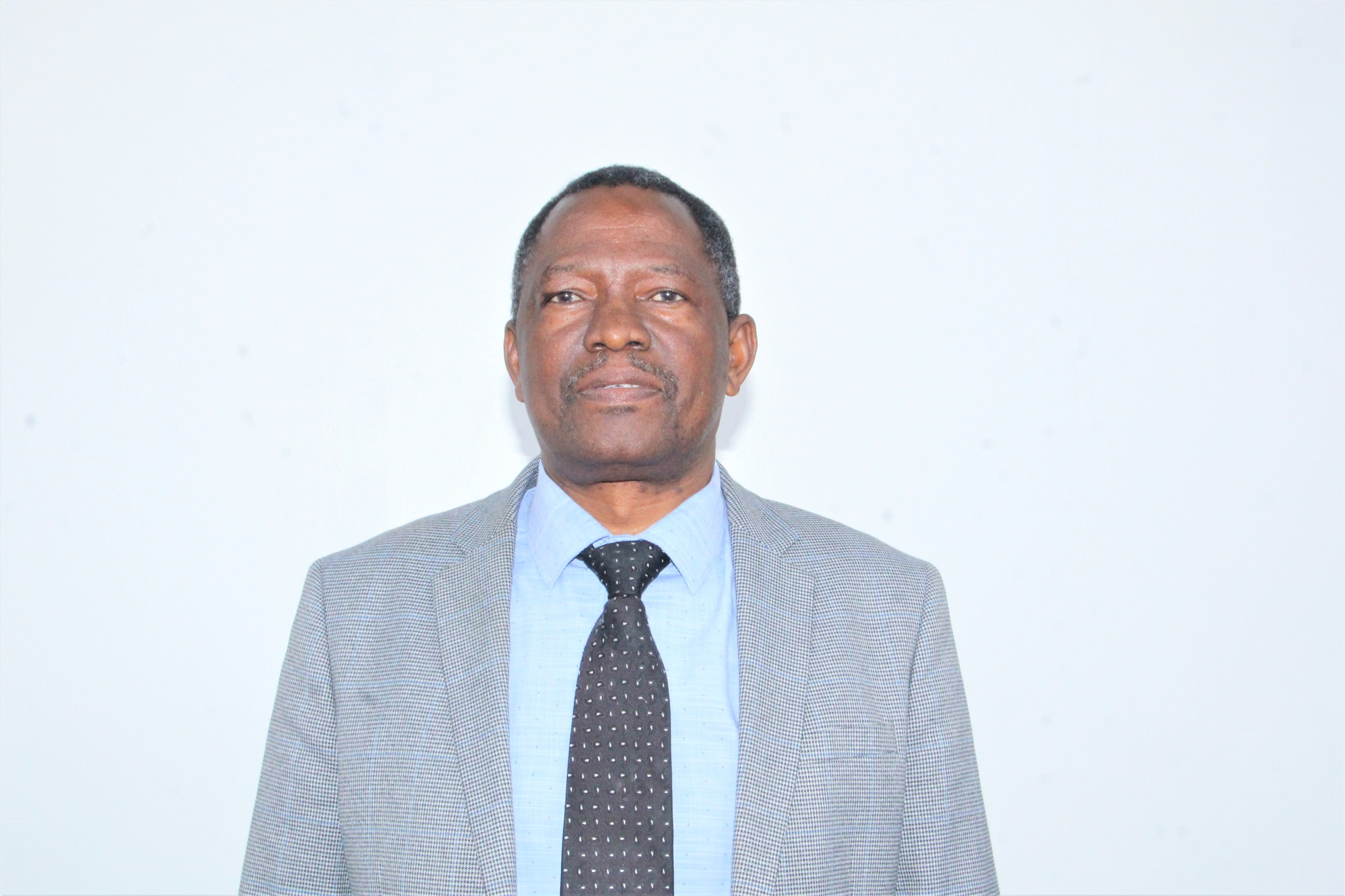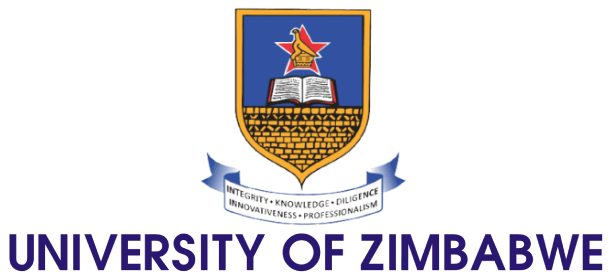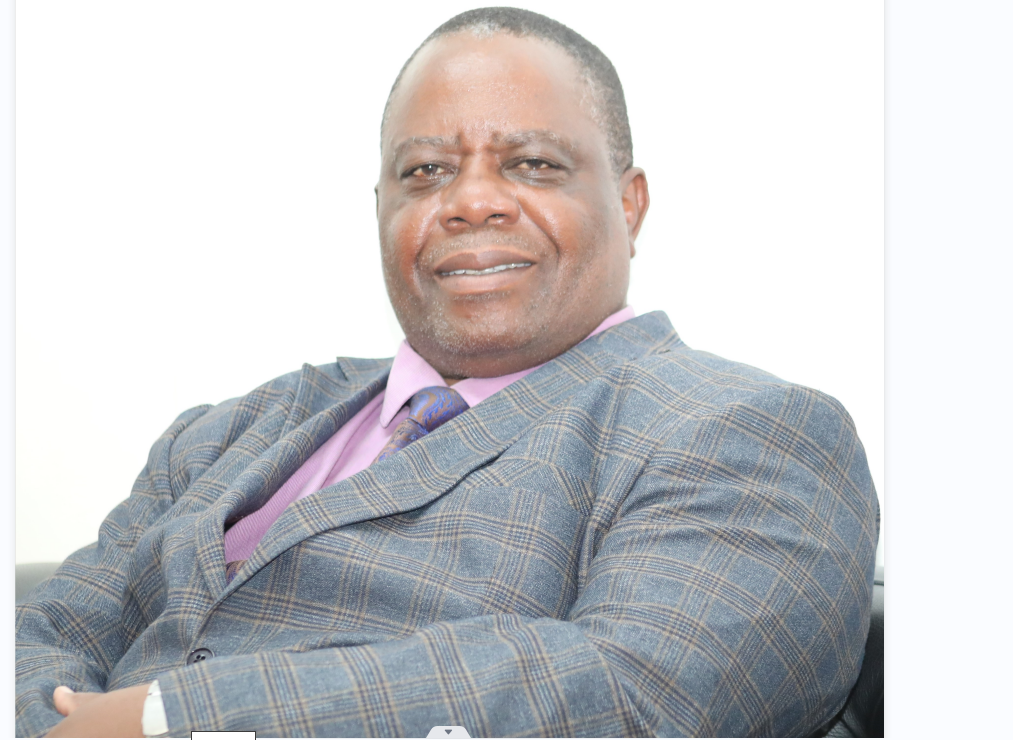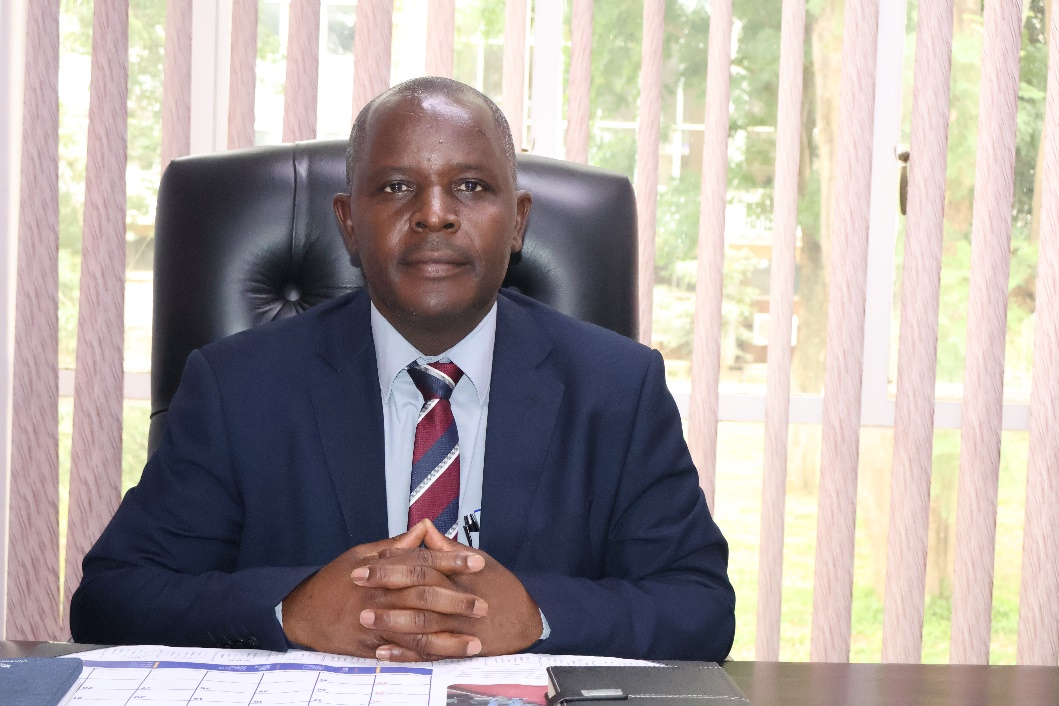Pro-Vice Chancellor, Academic Affairs and Administration

Professor Attwell Mamvuto
Ph.D; M.Ed; B.Ed; Cert. Ed; Executive Cert. Program &Project M&E (UZ)
CONTACT DETAILS
This email address is being protected from spambots. You need JavaScript enabled to view it. This email address is being protected from spambots. You need JavaScript enabled to view it.
This email address is being protected from spambots. You need JavaScript enabled to view it.
This email address is being protected from spambots. You need JavaScript enabled to view it.
This email address is being protected from spambots. You need JavaScript enabled to view it.
Business: +2632423032211 Ext 11103
Mobile: +263772350792
ORCID: 0000-0003-2644-338X
Professor Attwell Mamvuto is an Associate Professor, Art and Design Education in the Department of Art Design and Technology Education, as well as the Pro-Vice Chancellor, Academic Affairs and Administration at the University of Zimbabwe. He has also been a Chairperson of the Department of Teacher Education, Deputy Dean and Dean of the Faculty of Education, Proctor as well as the Senior Proctor at the University of Zimbabwe. During his tenure as the Chairperson of the Department of Teacher Education, he was responsible for teacher education programmes in all teachers colleges in Zimbabwe that are associate institutions of the University of Zimbabwe. He is internationally published in the areas of art curriculum, pedagogy, assessment in art education, and teacher education. His editorial experience includes a reviewer for international journals and an editor of book manuscripts. He has been an external examiner to local and regional universities. He has done consultancy work for entities such as UNICEF,VVOB, Save the Children, and Youth Council of Zimbabwe. Professor Mamvuto is an executive board member of the Africa Arts Association (AfrAA), a continental arts body, and member of the International Study Association on Teachers and Training (ISATT).
Publications (Journal articles, book chapters)
1. Mamvuto, A. (2025). Public art in Zimbabwe. Perspectives for the enhancement of the art and design curriculum. International Journal of Education and the Arts, 26(12).http://doi.org/10.26209/ijea26n12
2. Chiutsi, V. & Mamvuto, A. (2024). Culture and visual representation in children’s unsolicited graphic art: Insights with pedagogical implications. Mosenodi Journal, 27(2), 19-32.
3.Imbayago, S., Mamvuto, A., Katsamudanga, S. & Kwaira, P. (2024). Reading beyond theimagery: Interpreting the art of Tengenenge sculpture community. Communiars, Journal of Image,Arts and Critical and Social Education, 12, 55-69
4. Mpofu, N., Mamvuto, A., & Nhira-Mberi, E. (2024). Metaphoric visual expressions in African art: aniconographical analysis of selected artworks by contemporary visual artists. Visual Studies.https://doi.org/10.1080/1472586X.2024.2346627
5. Mamvuto, A. & Mannathoko, M. (2024). Truncated art education: Perspectives on Africanizing the art and design curriculum. In K, Freedman & F. Hernández- Hernández, Curriculum, Culture and Art Education: Comparative Perspectives, pp229-242. SUNY Publishers, USA.
6. Mamvuto, A. (2024). Museum-school partnership: Synergizing paradigmatic engagements. In A.Sinner, B. White, &T. Osler (Eds). Propositions for Museum Education: International Art Educatorsin Conversation. pp. 149-160. Intellect Publishing, UK. https://doi.org/10.1386/9781789389135_14
7. Mamvuto, A.; Machingura, F.; & Tafirenyika, J. (2024). Motivation for Doing Postgraduate Studies especially Doctoral Studies (PhD) in Zimbabwe. In F. Machingura & M. Mawere, Titles without Meriting: Interrogating the Fake Doctorate Phenomena, pp. 111-125. Lexington Books, UK.
8. Tafirenyika, J.; Machingura, F.; &. Mamvuto, A. (2024). Supervisor Related Factors Impacting on Doctoral Degree Candidature at a Selected Higher Education Institution in Zimbabwe. In F.Machingura & M. Mawere, Titles without Meriting: Interrogating the Fake Doctorate Phenomena,pp. 183-199. Lexington Books, UK.
9. Mpofu, N., Mamvuto, A., & Mupondi, G. (2023). Envoicing silent objects: Giving found objects anew lease of life by contemporary African artists. Australian Art Education. 44(1), 30-41
10. Mamvuto, A. (2023). Modeling an authentic multivariate assessment scheme in art and design10. Mamvuto, A. (2023). Modeling an authentic multivariate assessment scheme in art and designteacher education curriculum, Communiars, Journal of Image, Arts and Critical and SocialEducation, 10, 24-36. https://dx.doi.org/10.12795/Communiars.2023.i10.02
11. Mamvuto, A. & Samwanda, B. (2023). Museum, a space for a[c]ulturing authentic aesthetic sensibilities. International Journal of Education & the Arts, 24(si1.5). http://doi.org/10.26209/ijea24si1.5
12. Imbayago, S.; Mamvuto, A.; Katsamudanga, S. & Kwaira P. (2022). Synergizing gallery narrativesand art and design teacher education curricula for enhanced visual art practice. ZANGO Journal of Contemporary Issues. 35, 42-56.
13. Mamvuto, A. (2022). Anecdotal discourses in Art and Design education in Zimbabwe. In A.Mamvuto; N. Makuvaza; P. Kwaira & F. Zindi. Discourses in Education and Culture in Post-Colonial Zimbabwe. Harare: University of Zimbabwe Press.
14. Mamvuto, A. Mannathoko, M. (2022). Reconfiguring and programming visual arts education inprimary and secondary schools amidst COVID-19 protocols. Mosenodi Journal, 25(2), 103-118.
15. Mamvuto, A.; Dlodlo, M.; Dewa, V. & Dziwa, D.D. (2022). Art and Design in higher education:Narratives and trajectories in university education in Zimbabwe. In D. Garnet & A. Sinner (eds.)Living Histories: Encounters with International Perspectives in Art Education, pp.176-189. UK:Intellect.
16. Mamvuto, A. & Kangai, P. (2021). Portfolio implementation for self-reflection and professionalgrowth of students in the arts. Visual Studies. https://doi.org/10.1080/1472586X.2021.1940262.
17. Mamvuto, A. & Mannathoko, M. (2021). The changing African Art and Design Curricular:Narratives from Teacher Education. Arts Education Policy Review.https://doi.org/10.1080/10632913.2021.1952675.
18. Mamvuto, A. (2021). Interfacing artistic freedom, censorship, and pedagogy: An interview withartist-teacher Chikonzero Chazunguza. Visual Arts Research, 47(2), 89-101.
19. Gurure, R. Mamvuto, A. (2021). Examining teachers’ discourses of the Visual and PerformingArts (VPA) in the primary school curriculum. Australian Art Education, 42(1), 70-82.
20. Mannathoko, M. & Mamvuto, A. (2020). Modelling an integrative approach to the Creative andPerforming Arts and the Visual and Performing Arts in the primary school curriculum. LonakaJournal of Learning and Teaching, 11(2), 100-116.
21. Musoni, P., Mamvuto, A. & Machingura, F. (2020). Traditional African religious artefacts in the Johane Masowe Chishanu yeNyenyedzi Church in Zimbabwe: Interpreting the visual narratives.Studia Historiae Ecclesiasticae, 46(1): 1-17.
22. Mamvuto, A. & Mannathoko, M. (2019). African art and design curriculum: In R. Hickman (GeneralEditor), J. Baldacchino, K. Freedman, E. Hall & N. Meager (Volume Editors) International Encyclopedia of Art and Design Education, Curriculum. (pp. 577-587). Sussex: John Wiley & Sons Inc.
23. Mamvuto, A. (2019). Visual arts and art education in Zimbabwe since the 1999 Presidential Commission of Inquiry into Education and Training (CIET). Teaching Artist Journal, 17(1-2): 34-44.
24. Mamvuto, A. (2019). Interfacing contemporary art and art education in sub-Saharan Africa. In R.Hickman (General Editor), J. Baldacchino, K. Freedman, E. Hall & N. Meager (Volume Editors).International Encyclopedia of Art and Design Education, Histories and Philosophies. (pp. 205-217).Sussex: John Wiley & Sons Inc.
25. Mannathoko, M. & Mamvuto, A. (2019). Assessment in art and design education. An analysis of practices in Botswana primary schools. In R. Hickman (General Editor), J. Baldacchino, K.Freedman, E. Hall & N. Meager (Volume Editors). International Encyclopedia of Art and Design Education, Pedagogy. (pp. 1233-1249). Sussex: John Wiley & Sons Inc.
26. Mannathoko, M. & Mamvuto, A. (2018). Teaching the arts in the primary school curriculum. What strategies imbue the integrative arts subjects? Studies in Art Education. 59(2): 145-158.
27. Mannathoko, M. & Mamvuto, A. (2018). Drawing and the aesthetisation of the human figure by the Botswana children aged four to ten years: Implications for pedagogy. International Journal of Art and Design Education. 38(2), 376-386.
28. Mannathoko, M. & Mamvuto, A. (2018). Learner involvement in art and design educationassessment: The missing matrix in Botswana primary schools. Arts Education Policy Review,119:3, 172-184.
29. Khudu-Petersen, K. & Mamvuto, A. (2016). Second chance education in Botswana: Implementinga holistic approach based on the botho philosophy to empower marginalised youth in the Kweneng District, Alternative: An International Journal of Indigenous Peoples. 12(1): 57-70.
30. Kangai, P. & Mamvuto, A. (2012) Picturing the curriculum: Decoding the socio-cultural messages in children’s unsolicited representations. Zimbabwe Journal of Technological Sciences. 2(1): 121-138.
31. Mamvuto, A. Academic examining in the University of Zimbabwe Scheme of Association. In A.Mamvuto, P. Kangai, B.R.S. Chivore & F. Zindi (Eds). Excellence in Teacher Education: TheZimbabwe Experience (pp46-62). Harare. University of Zimbabwe. ISBN 978-1-77920-045-7.
32. Kangai, P. & Mamvuto, A. (2011) Emerging perspectives in teaching practice external examining in the University of Zimbabwe scheme of association. Zimbabwe Journal of Educational Research23(2): 84-101.
33. Oyedele, V.; Mamvuto, A. & Nhiwatiwa, L. (2010) Teachers’ perceptions on the effectiveness ofwomen leadership in Mutare District schools. Zimbabwe Journal of Educational Research, 22(2):170-180.
34. Mamvuto, A. & Kangai, P. (2009) Michael Polanyi’s theory of cognition: Its critique and implications for art education. Zimbabwe Journal of Educational Research, 21(2): 142-155.
35. Mavhunga, P.J; Mavundutse, O. & Mamvuto, A. (2008). Professional studies: The Zimbabweteacher education curriculum bearer? Zimbabwe Bulletin of Teacher Education, 15(1): 93-109.
36. Mamvuto, A. (2006) Deconstructing visual imagery by the mentally retarded: Implications formethodology theory. Zimbabwe Journal of Educational Research, 18(1): 50 – 89.
37. Mamvuto, A. (2006). A case study of multiculturalism and diversity in art and design teaching andlearning in selected secondary schools in Bulawayo. Zimbabwe Bulletin of Teacher Education,13(2): 39-61.
38. Mamvuto, A. (2004) Developing critical and reflective thinking in art and design studio practice through formative portfolio management: An analysis of pre-service art and design secondaryschool teachers. Zimbabwe Journal of Educational Research, 16(1): 29 - 52.
39. Mamvuto, A. (2002). Involving students in the evaluation process of their own creative art studioproductions through mutual evaluation. Zimbabwe Bulletin of Teacher Education, 11(2): 1-14.





